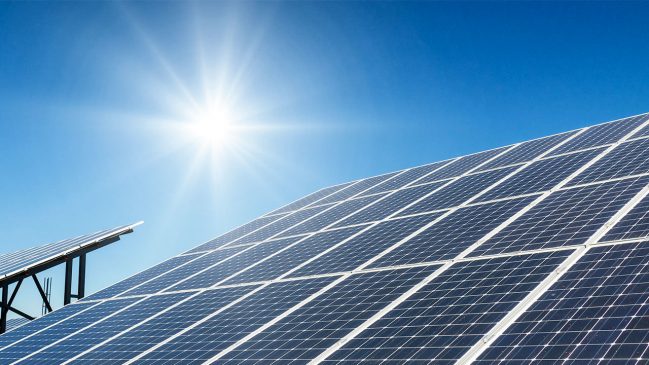Clean energy is the need of the hour. India, a country in South East Asia and also the second most populous in the world, has huge potential in solar power, thanks to its geographical position on Earth of being a tropical country. The country receives an ample amount of sunlight which is today being touted to be the biggest source of renewable energy and provides massive growth opportunities to the solar energy sector. The successive governments in the country have been promoting the solar energy sector. According to a 2018 report by Climatescope, India is ranked second among emerging economies to lead toward a transition to clean energy.
The government has set a target of reaching a renewable energy generation capacity of 225 GW by 2022 and is offering a number of benefits as well as tax rebates to businesses that shift to renewable solar energy systems. Recently, India achieved 5th global position in solar power deployment by surpassing Italy. Solar power capacity has increased by more than 11 times in the last five years from 2.6 GW in March 2014 to 30 GW in July 2019.
Prime Minister Narendra Modi has time and again advocated for shifting to clean and sustainable energy from the conventional form. He has pledged that by 2030, India will produce more energy through solar and other renewables than its entire grid now.
As solar energy not only protects the environment but also provides an alternative to conventional energy sources, the government has come up with an extensive subsidy plan. The Ministry of New and Renewable Energy (MNRE) is the nodal Ministry for all matters relating to new and renewable energy.
The primary purpose of offering a subsidy on solar panels (system) is to encourage people to look for alternative energy resources. By installing solar rooftop systems, people can generate their own electricity and use it for different purposes.
Solar panels are installed on the roof or in open spaces that produce electricity by transforming the sunlight. These panels are eco-friendly and no harmful emissions are released during the process, thus also curbing the carbon footprint.
To generate solar power by installing solar panels on the roof of the houses, the Ministry of New and Renewable Energy is implementing a Grid-connected Rooftop Solar Scheme (Phase-II). Under this scheme, the Ministry is providing 40% subsidy for the 3 kW and 20% subsidy beyond 3 kW and up to 10 kW. The scheme is being implemented in the states by local Electricity Distribution Companies (DISCOMs).
The rooftop solar (RTS) plant is a system installed mainly on the roof of a building and includes installations on open contiguous land within the area of premises wherein valid and live electricity connection has been provided by the concerned Distribution utilities/companies (DISCOMS). Typically, 1(one) kWp RTS plant requires about 10 sq. m area.
How much will the consumer will pay:
The consumer will pay only the balance amount, after excluding Central Financial Assistance (CFA) portion, to the empanelled vendor. The CFA will be released through DISCOMs to the empanelled vendor after commissioning and inspection of the RTS plant. DISCOMs shall adhere to the suggestive timelines for all such processes.
How to apply for solar rooftop subsidy
Step 1: To apply online, visit the official website – solarrooftop.gov.in
Step 2 At the homepage, click on the ‘apply for solar rooftop-click here ‘link
Step 3: The page containing the DISCOM Portal Links will open. It will enable people to apply for the Rooftop Solar Scheme.
Step 4: Check the list of DISCOM Portal links available in a state-wise manner.
Step 5: Applicants can click on the respective links according to their state to open the state electricity department or power corporation website.
Step 6: Check the solar rooftop online application/registration form available on the site.
Benefits of solar rooftop subsidy
- Saving on electricity bills by the consumer.
- Utilization of available vacant roof space, no additional land required.
- Low gestation period.
- No additional requirement of transmission and distribution (T&D) lines.
- Reduces T&D losses as power consumption and generation are collocated.
- Improvement in the tail-end grid voltages and reduction of system congestion.
- Long term energy and ecological security by reduction in carbon emission.
- Better management of daytime peak loads by DISCOM/ utility.
- Meeting of the Renewable Purchase Obligations (RPOs) of obligated entities.
The consumer has to pay the balance amount after deducting the subsidy (eligible Central Financial Assistance) from the L1 project cost discovered by the DISCOMs. Advisory on the scheme is also available on Ministry of New and Renewable Energy website





































